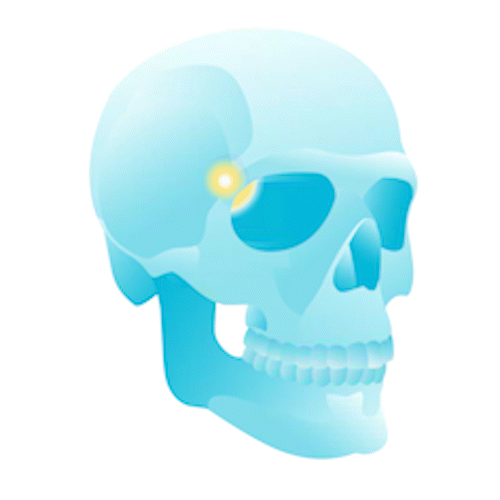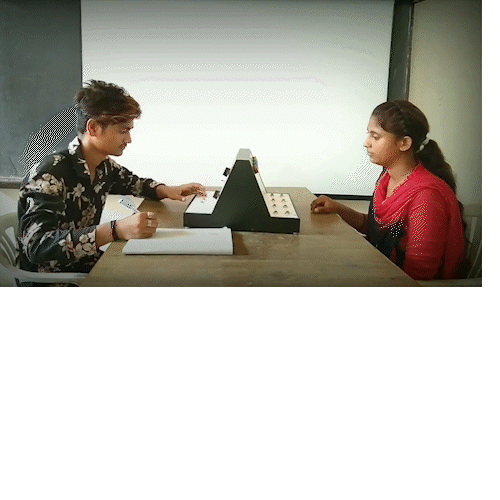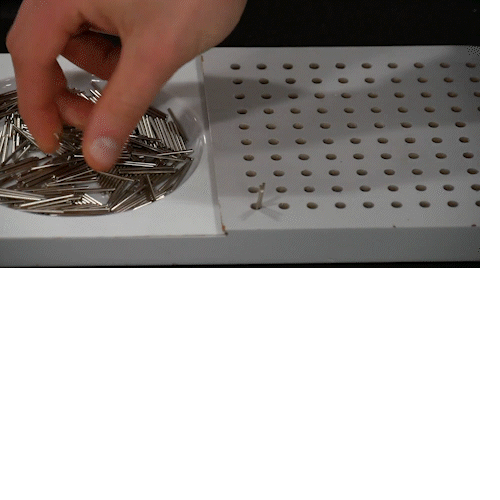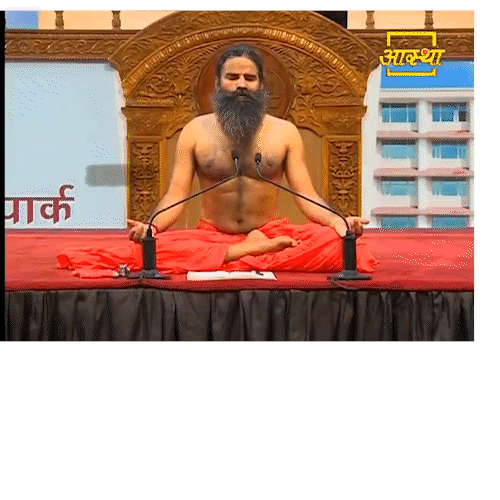4 Surprising Facts About the Breath of Fire That You Definitely Didn't Know
Oct 30, 2022
How would you like to:
- Get faster in your reflexes
- Make clearer decisions in less time,
- Sharpen your focus and
- Enhance your fine motor skills
All by doing a few minutes of easy to do technique of breathing?
This isn't just subjective, touchy-feely sort of thing- I’m talking about real results from clinical neuroscientific studies done on this particular practice of breathing which I’m going to teach you in this article. It’s called the Breath of Fire or “Kapalabhati Pranayama” which translates as the “Shining Skull Breath” and you got to love the name if nothing else.
Here, I'll teach you why you should do it, how you should do it, how not to do it and we will end with a few rounds of practice. Let's jump in!
Breath of Fire – The History
 Kapalabhati is a very old, fast-breathing technique that you find first written down in the 15th century Hatha Yoga Pradipika. It is done by rapidly and repeatedly doing sharp strong exhalations followed by passive inhalations. As you can imagine, this does wonders in clearing out the sinuses. In a hatha yoga practice, kapalabhati is a purification technique called a kriya, and it can be a warm-up for other pranayamas like Nadi Shodana or Vishama Vritti. Doing a few rounds of Kapalabhati Pranayama can help you go into longer breath holds because it reduces the urge in your body to breathe for a short while afterwards. And sometimes I like to do it in the middle of a yoga practice in various positions to energize and work on my core.
Kapalabhati is a very old, fast-breathing technique that you find first written down in the 15th century Hatha Yoga Pradipika. It is done by rapidly and repeatedly doing sharp strong exhalations followed by passive inhalations. As you can imagine, this does wonders in clearing out the sinuses. In a hatha yoga practice, kapalabhati is a purification technique called a kriya, and it can be a warm-up for other pranayamas like Nadi Shodana or Vishama Vritti. Doing a few rounds of Kapalabhati Pranayama can help you go into longer breath holds because it reduces the urge in your body to breathe for a short while afterwards. And sometimes I like to do it in the middle of a yoga practice in various positions to energize and work on my core.
The word "kapālabhātī" (कपालभाती) is a combination of two words: “kapāla” (कपाल) which means skull and “bhāti” (भाति) which means to shine. Thus, it is the “skull-shining breath” and while that could sound like a death metal band, the name would appear to refer to the kind of brightening of the brain and perception that comes with a few minutes of practice. And what is so interesting is that the subjective states that the ancient yogis observed from doing this practice is being corroborated in studies in neuroscience. Researchers have found that this practice affects the brain and perception, in some really remarkable and useful ways. Let’s take a look at 4 of these.
#1: Breath of Fire Reduces Degree of Optical Illusion
The poetry is that yoga and meditation brings the practitioner out of a state of delusion to a state of seeing reality more clearly. This is of course, vague and probably cannot be explained unless you experience it for yourself. But funnily enough, there was a clinical study which used a literal optical illusion to show that this pranayama actually does bring someone out of illusion.

Researchers used the Müller-Lyer illusion which is an optical illusion consisting of three stylized arrows. Subjects are asked to put a mark on the line that they think is the middle, but they tend to place it more towards the "tail" end. After several minutes of high frequency yoga breathing there was a significant decrease in the degree of optical illusion that they experienced- in other words, the breathing made their brains cut through the illusion and perceive more clearly.
#2: Breath of Fire Improves Visual Reaction Time
 Another study looked into the use of kapalbhati pranayama while doing eye exercises to test visual Reaction Time. Researchers took 60 subjects and tested their visual reaction time for red and green light. They trained one group to practice a sequence of eye exercises and kapalbhati pranayama and had them go home and do this practice for 8 weeks. The control group just went about their usual life. After 8 weeks, they came back, tested again and the kapalabhati practicing group showed much a much faster visual reaction time. In other words, this breathing technique can make you quicker in your brain.
Another study looked into the use of kapalbhati pranayama while doing eye exercises to test visual Reaction Time. Researchers took 60 subjects and tested their visual reaction time for red and green light. They trained one group to practice a sequence of eye exercises and kapalbhati pranayama and had them go home and do this practice for 8 weeks. The control group just went about their usual life. After 8 weeks, they came back, tested again and the kapalabhati practicing group showed much a much faster visual reaction time. In other words, this breathing technique can make you quicker in your brain.
#3 Breath of Fire Boosts Finger Dexterity
 The next study took 140 subjects who were divided into two groups. One group practiced kapalabhati and the other practiced breath awareness. They then tested their performance on the O-Connor finger dexterity test which asks the subject to fill small holes with precisely three pins, over and over while measuring how fast they get it done. It is a test used to predict how quickly someone can manipulate small objects like what one would need for certain types of assembly line work. And what they found that after doing this breath practice, the subjects fingers had 19% more dexterity and 59% more accuracy. So in case you are setting out to do something which requires nimble work with your fingers, do a few rounds of kapalabhati first!
The next study took 140 subjects who were divided into two groups. One group practiced kapalabhati and the other practiced breath awareness. They then tested their performance on the O-Connor finger dexterity test which asks the subject to fill small holes with precisely three pins, over and over while measuring how fast they get it done. It is a test used to predict how quickly someone can manipulate small objects like what one would need for certain types of assembly line work. And what they found that after doing this breath practice, the subjects fingers had 19% more dexterity and 59% more accuracy. So in case you are setting out to do something which requires nimble work with your fingers, do a few rounds of kapalabhati first!
#4 Breath of Fire Speeds Up Perception
The last study here measured how kapalabhati would affect the speed of perception. This is a measure called the P300- which is a signal in the brain that spikes 300 milliseconds after a person gets some new, out of place input- like a sudden strange sound or an out of place visual. Versions of this test are used to study brain health during comas - If a person has a P300 response then they may have an improved chance of recovery.
 They took a group of people tested their baseline P300 response and split the group into two: one group practiced kapalabhati and the other group simply practiced breath awareness. They found that both practices, influenced the P300 signal where breath awareness increases the P300 peak amplitude, which suggests that this practice has more neural resources available for perception of new stimuli, while kapalabhati reduced the peak latency, which means the brain is faster to pick up the changes. So now you know that anytime you need to focus, or study, do some breath of fire first and you’ll have an edge.
They took a group of people tested their baseline P300 response and split the group into two: one group practiced kapalabhati and the other group simply practiced breath awareness. They found that both practices, influenced the P300 signal where breath awareness increases the P300 peak amplitude, which suggests that this practice has more neural resources available for perception of new stimuli, while kapalabhati reduced the peak latency, which means the brain is faster to pick up the changes. So now you know that anytime you need to focus, or study, do some breath of fire first and you’ll have an edge.
How to Practice the Breath of Fire
- As with all breath practices, sit up tall so your posture is upright and gives maximum room for your lungs to expand.
- Your first breath is to inhale a half breath through your nose
- Sharply force the breath out through your nose, let the inhalation be passive.
- Continue to force the breath out in short, sharp exhalations

What can be tricky about this practice is getting the navel to contract at the right place- if your core is weak then the contraction tends to start in the middle of the belly which makes the body and your energy feel as if it is moving downwards. We want to instead, with each sharp breath out, lift the energy through to the crown of the head.
References
Kapalabhati reduces degree of optical illusion: https://pubmed.ncbi.nlm.nih.gov/21853784/
Kapalabhati improves finger dexterity and visual discrimination https://pubmed.ncbi.nlm.nih.gov/22346064/
Kapalabhati improves visual reaction time https://www.researchgate.net/publication/258216742_Effect_of_Various_Eye_Exercise_Techniques_along_with_Pranayama_on_Visual_Reaction_Time_A_Case_Control_Study
Kapalabhati reduces peak latency of P300 wave: https://pubmed.ncbi.nlm.nih.gov/19243275/
Breath Energy Newsletter
The Breath Energy Newsletter comes out on the first Friday of every month. It includes a conscious breathing practice, a body-mind topic and announcements.
Enter your email and sign up for free right now
No Spam. Unsubscribe at any time.

